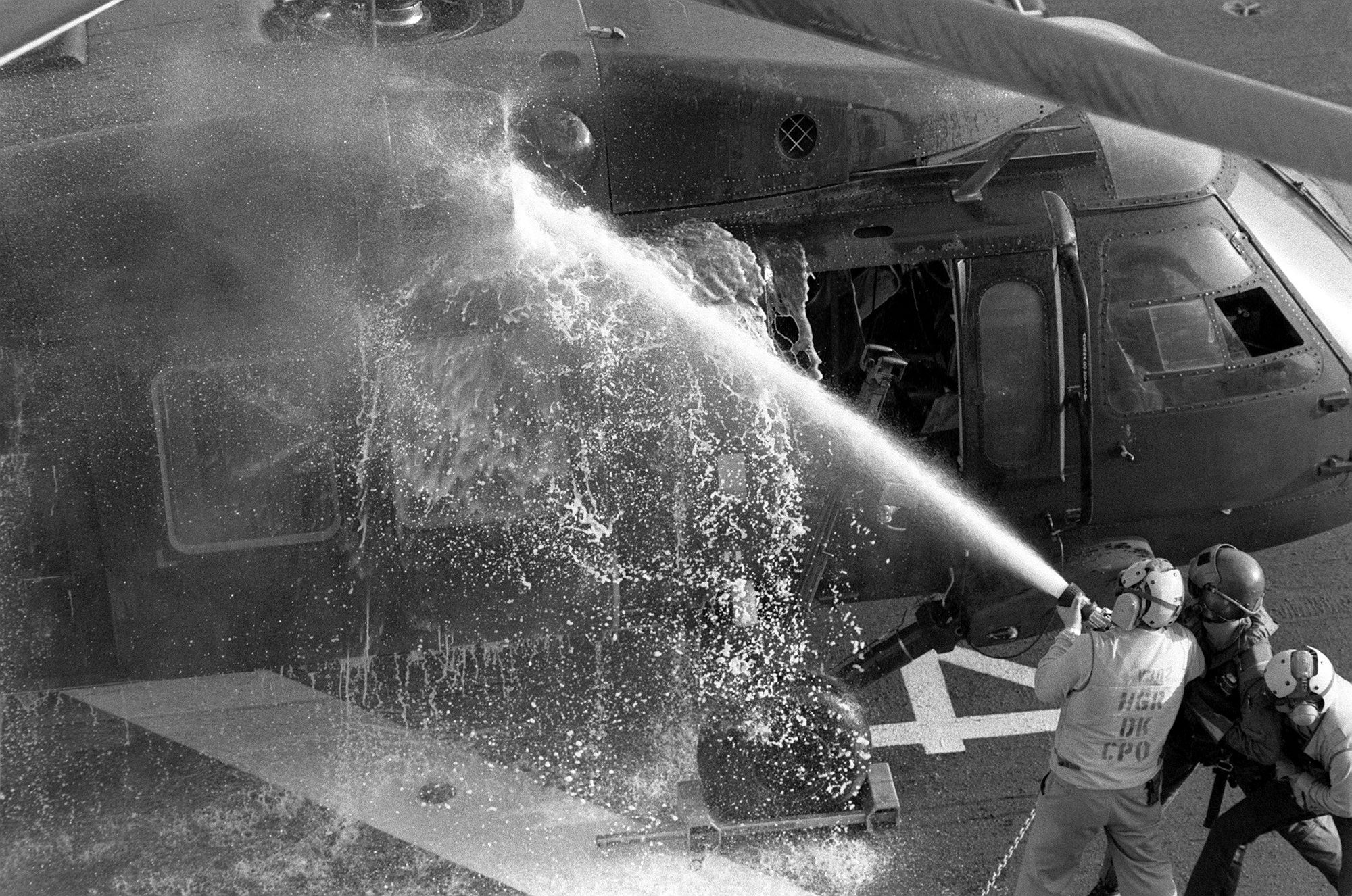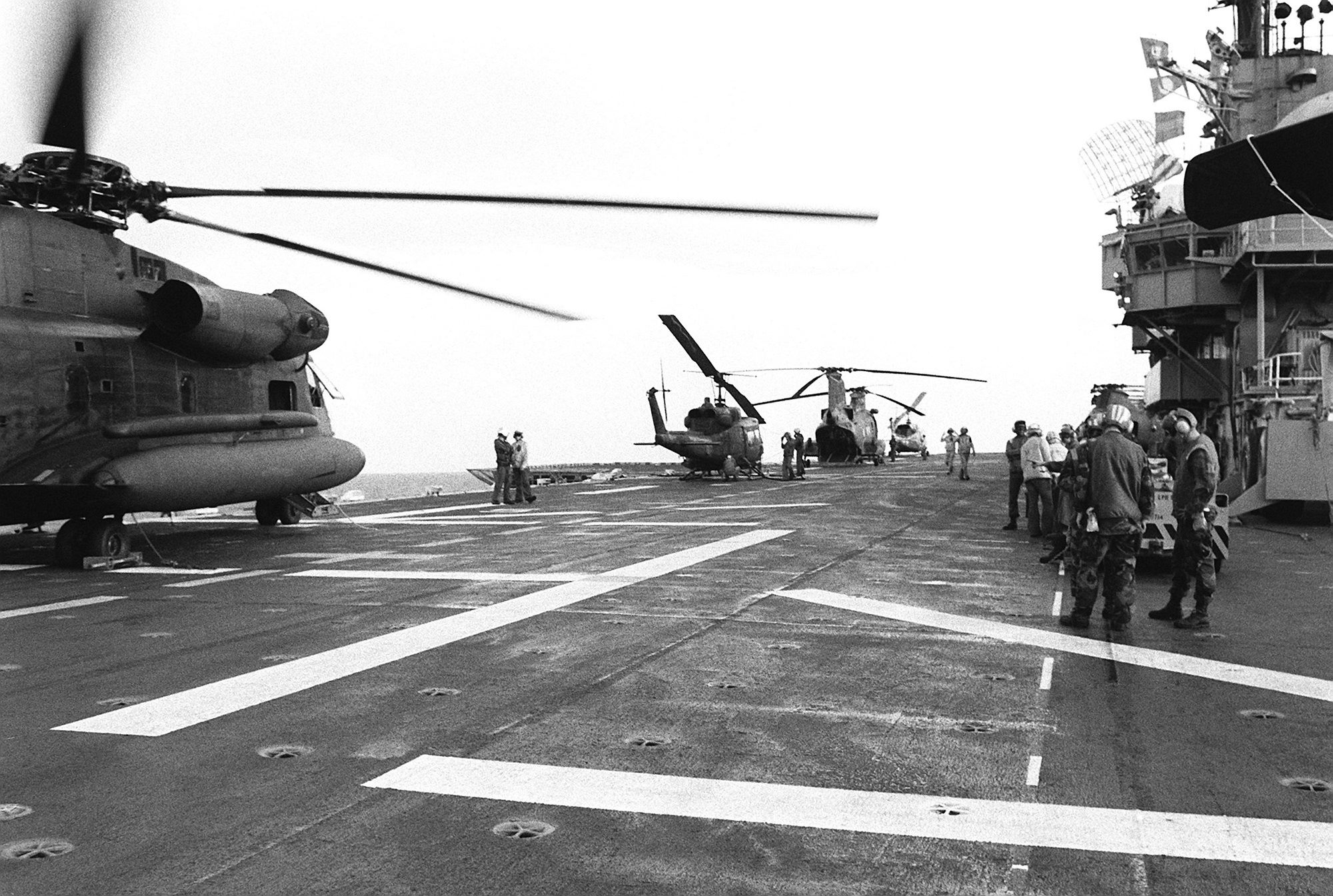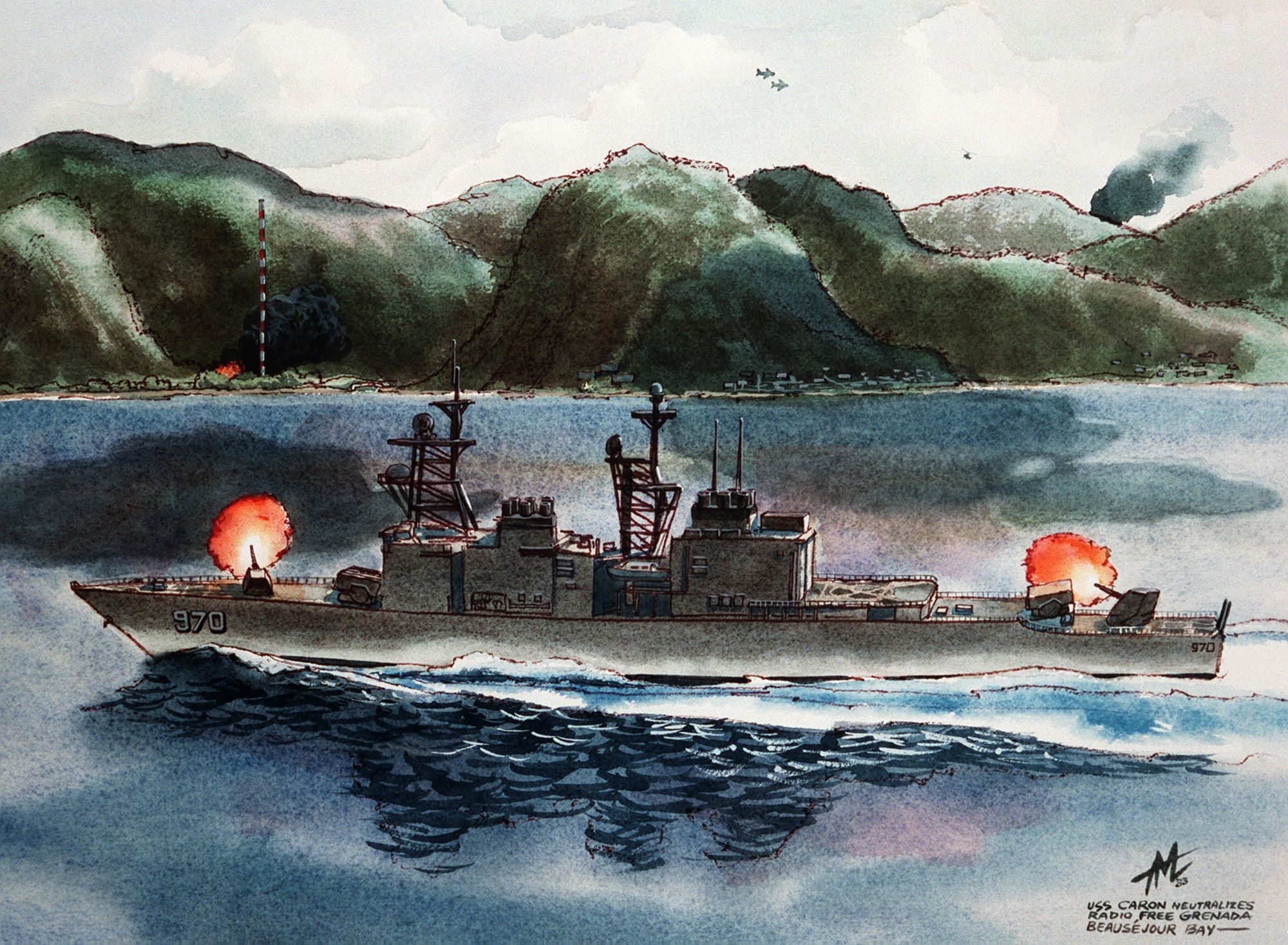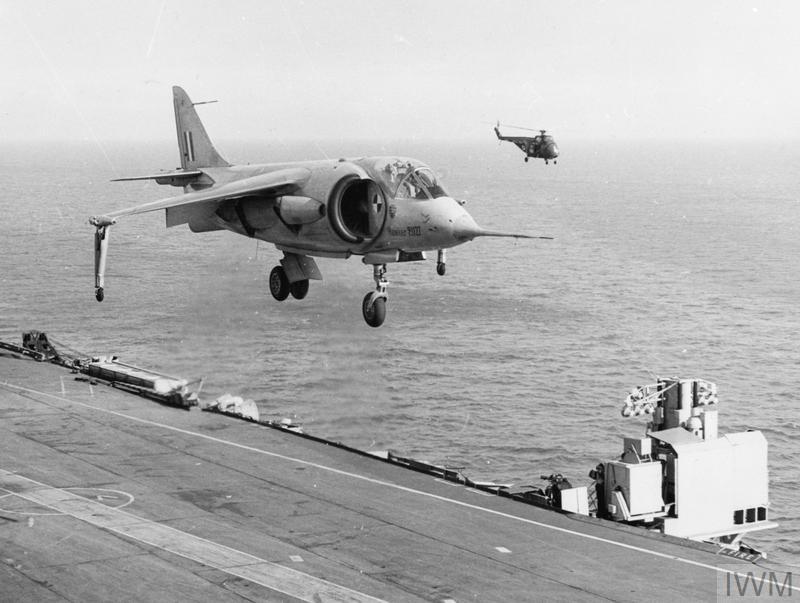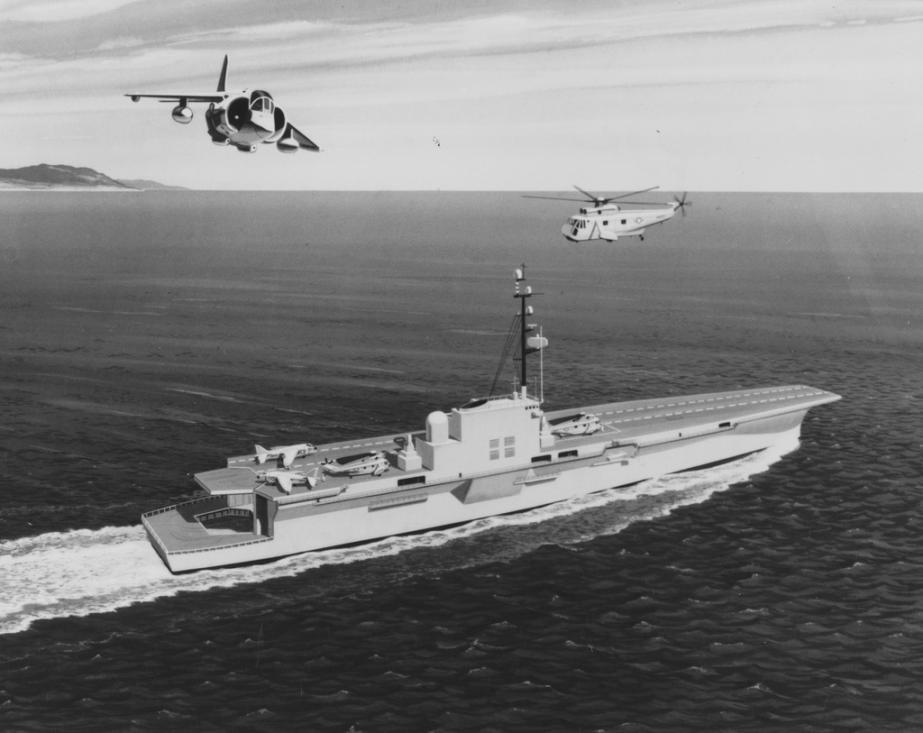Here at LSOZI, we are going to take off every Wednesday for a look at the old steam/diesel navies of the 1859-1946 time period and will profile a different ship each week. These ships have a life, a tale all of their own, which sometimes takes them to the strangest places. – Christopher Eger
Warship Wednesday, May 18, 2016: Spanish gunboats a-go-go

NHC NH 45328
Here we see the General Concha-class cañonero (gunboat) Elcano shortly after she became the USS Elcano (PG-38) because of the activities of one Commodore Dewey. She would go on to serve 44 hard years in total.
Laid down 3 March 1882 by Carraca Arsenal, Cadiz, Spain, Elcano was a small warship, at just 157’11” between perpendiculars (165-foot overall length), and tipping the scales at just 620-tons with a full load. Slow, she could only make 11-ish knots. However, what she could do was float in just 10 feet of water and carry two 120mm low angle guns, a single 90mm, four Nordenfelt QFs, and two Whitehead torpedo tubes around the shallow coastal littoral of the Philippines where the Spanish were having issues with the locals that often involved gunplay.

120mm 25cal Hontoria M1879 (left) in Spanish service. Elcano mounted two of these guns. Note the opulent wheelhouse.
Sisters, designed for colonial service, included General Concha, Magallanes, and General Lezo, they were officially and maybe over ambitiously listed as “Crucero no protegido de 3ª clase” or 3rd class protected cruisers.

Class leader, Cañonero de la Armada Española General Concha, 1897
Described as “pot-bellied,” Elcano had a quaint Victorian-era ram bow and carried a mixed sailing rig for those times when coal, never plentiful in the PI, was scarce. She was commissioned into the Armada Española in 1884, arriving in Manila late that year. Like most of the 18 or so Spanish ships in the region (to include sister General Lezo), she was commanded by Spanish officers and manned by Filipino crews.

Cañonero español Elcano at commissioning. The Spanish liked dark hulls
Her peacetime service was quiet, spending more than a dozen years puttering around the archipelago, waving her flag and showing off her guns. Then came the Spanish-American War.
Just five days after a state of war between the U.S. and Spain began, on 26 April 1898, El Cano came across the U.S.-flagged barque Saranac—under one Captain Bartaby—carrying 1,640 short tons (1,490 t) of coal from Newcastle, New South Wales, to Iloilo, in the Philippines for Dewey’s fleet, and captured the same with a shot across the bow.

You see the good Capt. Bartaby, sailing in the days without wireless and being at sea for a week had missed the announcement of hostilities and said into Iloilo harbor to the surprise of El Cano‘s skipper, who dutifully placed the ship under arrest. Bartaby was able to cheat a Spanish prize court by producing convenient papers that Saranac had been sold for a nominal sum to an English subject just days before her capture, though she had sailed into a Spanish harbor with the Red White and Blue flying. We see what you did there, Bartaby, good show.
Dewey lamented this loss of good Australian coal, which was hard to find in the Asiatic Squadron’s limited stomping grounds after the Brits kicked them out of Hong Kong. Incidentally, the Saranac was the only U.S. ship captured during the war compared with 56 Spanish vessels taken by Yankee surface raiders.
Speaking of which…
The rest of Elcano‘s very short war was uneventful save for being captured during the Battle of Manila Bay on 1 May 1898 along with the rest of the Spanish Pacific Squadron under Admiral Patricio Montojo after Dewey battered his way into the harbor.

ELCANO at Cavite Navy Yard, Philippine Island. Note the extensive awnings. Description: Courtesy of D. M. MC Pherson, Corte Madena, California. 1967 Catalog #: NH 54354
Her three sisters all had more final run-ins. General Concha fought at San Juan, Puerto Rico, and narrowly escaped capture only to wreck herself on a reef off Morocco in 1913. General Lezo was ruined by a magazine explosion and sank just after Manila Bay. Magallanes, escaping destruction in Cuba, was discarded after sinking at her dock in 1903.
As for Elcano, her Spanish/Filipino crew was quickly paroled ashore at Cavite, and she languished there for six months under guard until being officially taken over by the U.S. Navy on 8 November.

USS ELCANO (PG-38) at Cavite Navy Yard, Philippine Island circa 1900, before being refitted for the U.S. Navy. Note she has been white-washed and her awning shown above in Spanish service deleted. You can also make out her starboard torpedo tube door just above the waterline. Description: Courtesy of LCDR John E. Lewis, 1945. Catalog #: NH 54353
Refitted for use to include swapping out her Spanish armament for American 4″/40cals (and plugging her 14-inch bow tubes), she was commissioned as USS Elcano (Gunboat No. 38) on 20 November 1902– because the Navy had a special task for the shallow water warship.
You see, once the U.S. moved into the PI, they used a series of captured and still-floating near-flat bottomed former Spanish gunboats (USS Elcano, Villalobos, Quiros, Pampanga, and Callao) to protect American interests in Chinese waters. These boats, immortalized in the book and film the Sand Pebbles, were known as the Yangtze Patrol (COMYANGPAT), after the huge river system they commonly haunted. The first modern patrol, started in 1903, was with the five Spaniards while two more gunboats, USS Palos and Monocacy, built at Mare Island in California in 1913, would later be shipped across the Pacific to join them while USS Isabel (PY-10) would join the gang in 1921.
Elcano was based in Shanghai from February 1903, her mission was to protect American citizens and property, and promote friendly relations with the Chinese– sometimes promoting the hell out of them when it was needed. She kept this up until 20 October 1907 when she was sent back to Cavite for a three-year refit.
During this time, she served as a tender to 1st Submarine Division, Asiatic Torpedo Fleet, with the small subs of the day having their crews live aboard the much larger (dry-docked) gunboat.

USS Shark (Submarine # 8) In the Dewey Drydock, Olongapo Naval Station, Philippines, circa 1910. The gunboat Elcano is also in the drydock, in the right background. Courtesy of Donald M. McPherson, 1978. U.S. Naval History and Heritage Command Photograph. Catalog #: NH 86963
Recommissioned 5 December 1910, Elcano took up station at Amony in China and resumed the monotony of river cruises in China’s decidedly strife-ridden countryside that included bar fights with British gunboat crews, welcoming visiting warlords with an open hand (and a cocked 1911 under the table), sending naval parties ashore to rescue random Westerners caught in riots and unrest, besting other USN ships’ baseball teams to the amusement of the locals, and just generally enjoying the regional color (though libo groups were ordered to always go ashore in uniform and with canteens).
In August 1911, Elcano and the rest of the patrol boats were joined by the cruisers USS New Orleans and Germany’s SMS Scharnhorst and Gneisenau in Hankow for the unrest that came along with the anti-monarchist putsch that ended the Manchu dynasty.
There, Elcano participated in an impromptu naval review along with other arriving vessels from Austro-Hungary, Japan, France, Russia, and a six-ship task force dispatched by the British. The ceremony’s true purpose: keep an eye on the nearly one dozen semi-modern Chinese warships in the harbor to make sure a repeat of the Boxer Rebellion didn’t spark. During this period, Elcano‘s men joined others in the International Brigade, sending 30 bluejackets with their Colt machine guns in tow to help guard the Japanese consulate. They were relieved ashore later in the year by a company of the British Yorkshire Light Infantry and a half-regiment of Siberian Cossacks shipped in for the task.

While on the Yangtze River Patrol, circa 1917. Description: Courtesy of Arthur B. Furnas, Corte Madera, California, 1969. Catalog #: NH 69694

During the Christmas season, circa December 1917, while in the Philippines. Note the Christmas tree on the bow and the other decorations aboard the ship. She would keep up this tradition for years. Description: Courtesy of Arthur B. Furnas, Corte Madera, California, 1969 Catalog #: NH 69697
Elcano would get a short break from Chinese waters when the U.S. entered WWI, being recalled to Manila Bay to serve as a harbor gunboat, patrolling around Corregidor from April 1917-Nov. 1918, just in case a German somehow popped up. Then, it was back to the Yangpat.
Meanwhile in China, as the putsch of 1911 turned into open revolution and then Civil War, Elcano and her compatriots in the Yangpat were ever more involved in fights ashore, landing troops in Nanking in 1916 along with other nations during riots there, in Chungking in 1918 to protect lives during a political crisis, and again in March 1920 at Kiukiang (now Jiujiang on the southern shores of the Yangtze), where Elcano‘s sailors acted alone, and then at Ichang where she landed a company of Marines for the task and remained as station ship and floating headquarters until September 1922.

Some of the ships of the U.S. Navy’s Yangtze River Patrol at Hangchow during the 1920s, with several local junks and sampans also present. U.S. Navy ships are (from left to right): USS Isabel (PY-10); USS Villalobos (PG-42); and USS Elcano (PG-38). Courtesy of Donald M. McPherson, 1969. U.S. Naval History and Heritage Command Photograph. Catalog #: NH 67127

Chinese general visiting Elcano. The commanding officer of Elcano is seen waiting to greet him at the top of the gangway, Ichang, China, circa the 1920s. Also, note how they have to walk right into the muzzle of the 4-incher when coming aboard– very subtle. Lookup: Gunboat diplomacy. Catalog #: NH 68976

Ship’s baseball team went ashore, in China, during the early 1920s. Courtesy of Frederick Cornman, Valois, New York, 1971. Catalog #: NH 77142

Rare today is a bluejacket who was a member of the Noble and Exclusive Order of the Brotherhood of Mighty River Rats of the Yangtze c.1903-1941. Photo via The Real Sand Pebbles.
These two letters from Elcano sailors from the 1920 volume of Our Navy, the Standard Publication of the U.S. Navy. Note the mention of the ship’s baseball team, hooch at $1.20 a quart, and the retelling of how 60 bluejackets cleared the streets of Kiukiang by bayonet point:
 During this service, Elcano proved a foundry for future naval leaders. Stars rained upon her deck, as no less than six of her former skippers went on to become admirals including Mississippian– later Vice Adm– Aaron Stanton “Tip” Merrill, who picked up the Navy Cross at the Battle of Blackett Strait in 1943 by smashing the Japanese destroyers Murasame and Minegumo without a single casualty.
During this service, Elcano proved a foundry for future naval leaders. Stars rained upon her deck, as no less than six of her former skippers went on to become admirals including Mississippian– later Vice Adm– Aaron Stanton “Tip” Merrill, who picked up the Navy Cross at the Battle of Blackett Strait in 1943 by smashing the Japanese destroyers Murasame and Minegumo without a single casualty.

Airing her sails in Chinese waters during the 1920s. She was undoubtedly one of the last warships with canvas in the fleet. Courtesy of Mr. Donald M. McPherson, Corte Madera, California, 1972. Catalog #: NH 75577

In dry dock at Shanghai, China, circa early 1920’s note the 4″/.40 caliber gun (lower) and the 3-pounder (above) Courtesy of Mr. Donald M. McPherson, Corte Madera, California, 1969 Catalog #: NH 68978

In dry dock, in Shanghai, China, during the early 1920s. Note stern 4″/40 gun. Courtesy of Frederick Cornman, Valois, New York, 1971. Catalog #: NH 77143
Between 1923-25, armed landing teams from Elcano went ashore and stayed ashore almost a half-dozen times in two extended periods in Shanghai during the unrest and street fights between rival factions.

Armed guard from Elcano, photographed in Chinese waters, during the early 1920s. Note Lewis machine guns. Courtesy of Frederick Cornman, Valois, New York, 1971. Catalog #: NH 77144
In March 1927, Elcano along with the destroyers USS William P. Preston, USS Noa, and the RN’s HMS Emerald took a “mob of undisciplined Nationalist soldiers” under intense naval gunfire outside of Nanking when the American Consul General John C. Davis and 166 others were besieged at the Standard Oil compound on Socony Hill.
It would be Elcano‘s last whiff of cordite.
By 1926, the seven veteran river gunboats were all worn out and the navy went shopping for replacements. With dollars always short in the Navy budget, it just made sense to build these new boats in China, to save construction and shipping costs. These new ships consisted of two large 500-ton, 210-foot gunboats (USS Luzon and Mindanao); two medium-sized 450-ton, 191-foot boats (USS Oahu and Panay), and two small 350-ton, 159-foot boats (USS Guam and Tutuila).
Once the new gunboats started construction, the five old Yangtze Patrol ships’ days were numbered. In November 1927, Elcano became a barracks ship in Shanghai for the newly arriving crews of the PCUs and by 30 June 1928, she was decommissioned after some 14 years of service to Spain and another three decades to Uncle Sam.

At Ichang China. Note trees on mastheads. Courtesy of Lt. Commander Merrill, USN, 1927. Catalog #: NH 54352
Elcano was stripped of all useful material, some of which went to help equip the new Yangpat boats then towed off the coast and disposed of in a sinkex by gunfire on 4 October 1928. Two of her former companions in arms suffered the same fate. Villalobos (PG-42), model for Richard McKenna’s San Pebbles, was likewise sunk by naval gunfire on 9 October 1928 and joined by the ex-Spanish then-USS Pampanga (PG-39) on 21 November. The days of Dewey’s prizes had come and gone, with the Navy getting a good 30 years out of this final batch.
Of the other Spanish armada vessels pressed into U.S. Navy service, Quiros (PG-40) was previously sunk as a target in 1923, and Callo (YFB-11) was sold at Manila the same year where she remained in use as a civilian ferry for some time.
The website, Sand Pebbles.com, keeps the memory of the Yangpat and her vessels alive while scrapbooks and uniforms are preserved in the hands of private collectors.
However, in Nanjing, on an unidentified monument there, is a series of Navy graffiti left by those Yankee river rats, if you look closely, you can just make out USS Elcano under USS Chattanooga.

They were there.

Group of Elcano crewmembers visit a joss house, in China, during the early 1920s. Courtesy of Frederick Cornman, Valois, New York, 1971. Catalog #: NH 77147
In one last comment on the vessel, the American ensign from the barque Saranac, captured during Elcano‘s Spanish career, is currently located at the Spanish Naval Museum in Madrid, a cherished war trophy from that one-sided conflict.

Bandera Saranac capturada cañonero Elcano en Filipinas en 1898 Museo Naval Madrid
The Spanish foreign ministry has, politely, declined to return it to the U.S. on several occasions over the past 120 years.
Specs:
Displacement: 620 long tons (630 t)
Length: 165 ft. 6 in (50.44 m)
Beam: 26 ft. (7.9 m)
Draft: 10 ft. (3.0 m)
Installed power: 1,200 ihp (890 kW)
Propulsion:
2 × vertical compound steam engines
2 × single-ended Scotch boilers
2 × screws
Rig: Schooner
Speed: 11 kn (13 mph; 20 km/h)
Complement:
Spanish Navy: 115
U.S. Navy: 99-103
Armament:
As commissioned:
2×1 120mm/25cal Hontoria M1879
1x 90/25 Hontoria M1879
4×1 25/42 Nordenfelt
2x 356mm TT (bow)
1902:
4×1 4″/40
4×1 3pdr (37mm) guns
2x Colt machine guns
1x 3-inch Field gun for landing party along with Lewis guns and rifles, handguns, and cutlasses
If you liked this column, please consider joining the International Naval Research Organization (INRO), Publishers of Warship International
They are possibly one of the best sources of naval study, images, and fellowship you can find http://www.warship.org/membership.htm
The International Naval Research Organization is a non-profit corporation dedicated to the encouragement of the study of naval vessels and their histories, principally in the era of iron and steel warships (about 1860 to date). Its purpose is to provide information and a means of contact for those interested in warships.
Nearing their 50th Anniversary, Warship International, the written tome of the INRO has published hundreds of articles, most of which are unique in their sweep and subject.
PRINT still has its place. If you LOVE warships you should belong.
I’m a member, so should you be!
